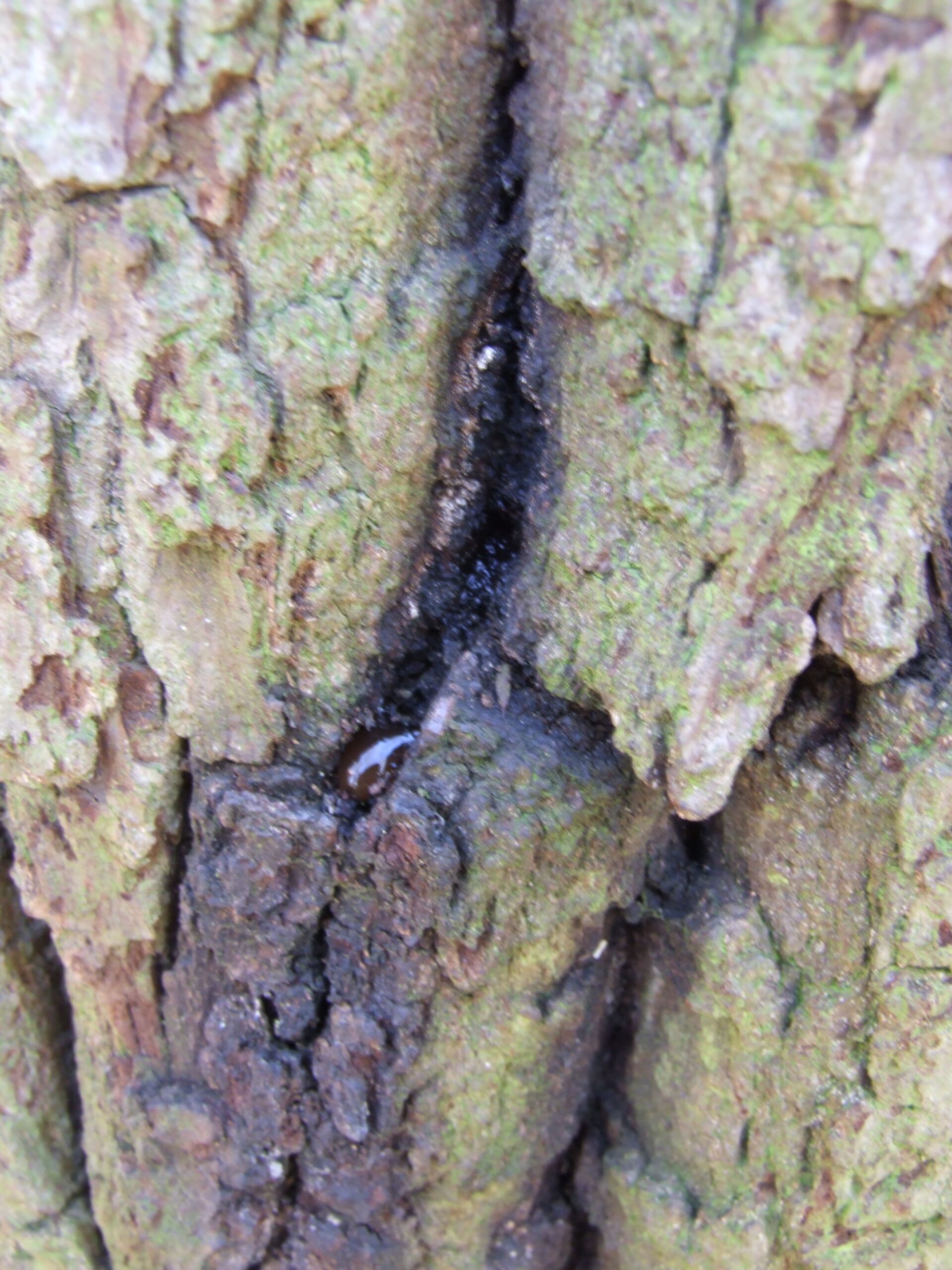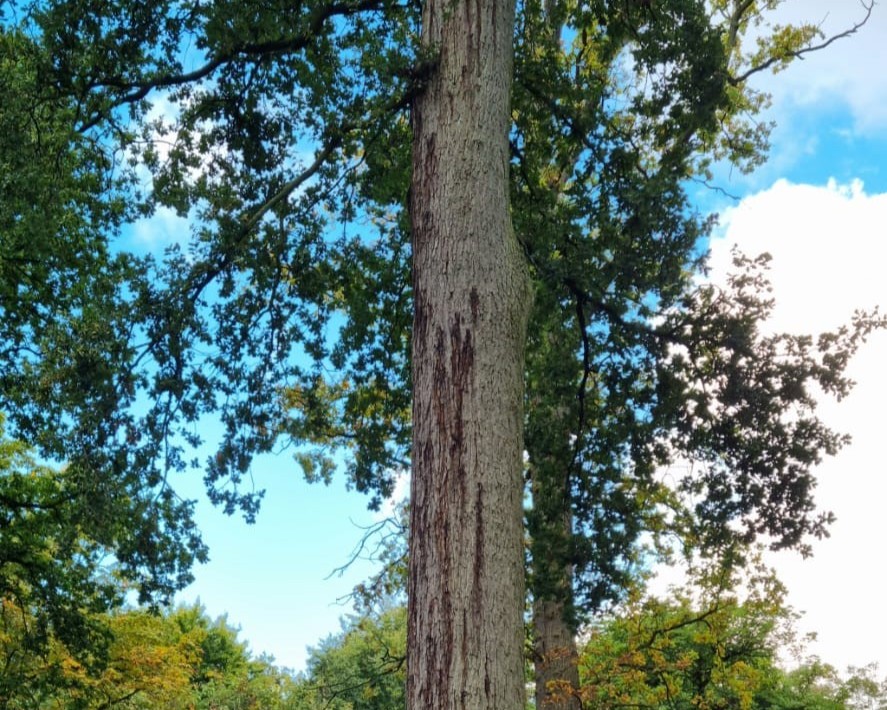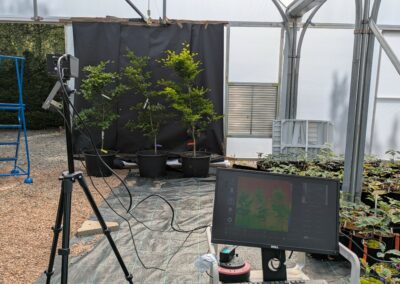Using spatial modelling to understand environmental predisposition to tree diseases
Project leads Dr. Nathan Brown, Dr. Elena Vanguelova, Dr. Sandra Denman I Forest Research
Lead organisation Forest Research
Collaborators Samantha Broadmeadow, Paul Taylor | Forest Research; National Soil Resources Institute; James Hutton Institute; UK Centre for Ecology and Hydrology (UKCEH)
Project status Complete (April 2022 – March 2025)
Project funding £155,000
Research outcome Pests and diseases spatial risk modelling and mapping
Context
Trees and woodland across the UK are facing unprecedented environmental challenges through climate change, disturbance (fire, wind or human action) and pest and disease threats. Understanding and mitigating the impacts of these threats is a complex challenge because the individual elements listed above interact with each other. For example, environmental conditions such as drought may weaken trees and predispose them to the actions of pest insects or pathogens. We need to improve our understanding of these relationships so that we can make informed decisions about new woodland planting or restocking.
Recent research on Acute oak decline (AOD) has demonstrated significant correlations with warm, dry parts of the country, high levels of atmospheric nitrogen deposition and low sulphur pollutant levels. Knowledge of trends between disease occurrence and environmental conditions has enabled predictions to be made describing which areas are prone to AOD infection and could be a powerful tool to identify areas in Britain where trees are and will be under stress in the future.
This information can inform species choice for planting and support management decisions for existing woodlands, leading to better survival and resilience of existing trees, forests and woodlands.
Research aims and objectives
Aims
This project aims to analyse current pest and disease distributions to reveal correlations with environmental conditions and management history. It will develop GB wide predictions for current and future risk from three case studies: Ash dieback (Hymenoscyphus fraxineus), Dothistroma needle blight (Dothistroma septosporum) and aerial Phytophthora species. Model predictions will support guidance on the best places for trees to be planted to minimise risks for pest and disease incursions.
Objectives
- We will build statistical models using environmental datasets and known disease distributions to identify trends that affect disease occurrence and/ or severity for the three case studies.
- In addition, we will extend and refine existing AOD models to include new observation data. The selected examples represent serious tree diseases in the UK, affecting a diverse range of woodland types from coniferous plantations to native broadleaves.
Each case study presents unique challenges for analysis with different data types available. Collectively they offer the opportunity to apply a range of analytical techniques, that could be adapted rapidly to explore further the risk of spread of novel pest or disease arrivals in the future.
Expected outcomes
- The project will produce a series of models and spatial risk maps that will be used to guide forest management advice.
- These outputs will be of direct use to scientists and policy makers as well as practitioners involved in woodland planning and management.
Further resources linked to this project
Watch a short talk on this project
In this talk, Dr Nathan Brown (Forest Research) presents research on the predisposition of trees to disease. (Caveat: Whilst unlikely to change, all of the results presented were provisional at the time of the talk).
This talk was part of the ‘Susceptibility of British Trees to Pests and Diseases’ webinar originally broadcast by the Centre for Forest Protection on 20 March 2025.

Ooze starting to flow from infected trees – a symptom of acute oak decline.
Images credits: Dr Sandra Denman & Dr Nathan Brown (Forest Research)
Glossary & Key Terms
Acute oak decline (AOD)
Acute oak decline is an emerging disease of oak trees (trees in the Quercus genus) which was first observed in the UK late in the 20th century. It can kill oak trees within four to six years of the onset of symptoms.
The disease is found mostly on mature oak trees, but younger trees can also be affected. It is caused by multiple agents, especially bacteria, and thousands of trees are affected. For infection to occur, it is likely the trees need to be weakened (predisposed) by certain factors, especially environmental factors. For more information, see Acute oak decline – Forest Research.
Ash dieback (Hymenoscyphus fraxineus)
Ash dieback is a highly destructive disease of ash trees (Fraxinus species), especially the United Kingdom’s native ash species, common ash (Fraxinus excelsior). It is caused by a fungus named Hymenoscyphus fraxineus (H. fraxineus), which is of eastern Asian origin. For more information, see Ash dieback (Hymenoscyphus fraxineus) – Forest Research.
Atmospheric nitrogen deposition
The process by which reactive nitrogen compounds, emitted into the atmosphere from various sources (including aeroplanes, cars, and certain factories), are deposited onto the Earth’s surface. This deposition can occur through both wet (e.g., rain, snow) and dry (e.g., gaseous absorption, particle settling) processes.
Broadleaves
A category of trees that have wide, flat leaves rather than needle-like leaves. These trees are usually deciduous and lose their leaves in winter.
Conifer (Pinophyta)
Conifers, or softwood trees, are cone-bearing and usually evergreen trees. They are a distinct group of trees that are economically significant due to their ability to grow quickly even on poor soils and in harsh climates. These trees yield timber that is highly suitable for industrial use, which has led to their widespread planting and management across many countries. Examples of conifer trees found in the UK include Scots pine, Douglas fir, and Norway spruce.
Dothistroma needle blight (Dothistroma septosporum)
Dothistroma needle blight (DNB) is an economically important disease of conifer trees (trees with cones and needles), and particularly pines (trees in the Pinus genus). It is caused by the fungus Dothistroma septosporum. It causes premature needle defoliation, resulting in loss of timber yield and, in severe cases, tree death. For more information, please see Dothistroma needle blight (Dothistroma septosporum).
Pathogen
An organism or agent that can cause disease. Pathogens include viruses, bacteria, fungi, and protists. They can infect a wide range of hosts, including plants and animals.
Phytophthoras
Phytophthora species are highly aggressive tree pathogens causing root rots and foliar and fruit diseases. Aerial Phytophthoras are rain dispersed and can cause foliar and shoot blight and stem and branch cankers. Root rotting species tend to be transmitted in soil and river water and on animal and human vectors and cause feeder root rot and stem collar necrosis. Several Phytophthora species are considered to be involved in the oak decline (for both Quercus robur and Q. petraea) that is reported as widespread across Europe. A number of studies have shown that decline is accelerated or exacerbated when Phytophthoras are present. For more information, see Phytophthoras – Forest Research.
Share this project on social media
Related Projects
Our Partners
Social media
Explore
Newsletter
Contact
© 2022 Centre for Forest Protection. All rights reserved.


